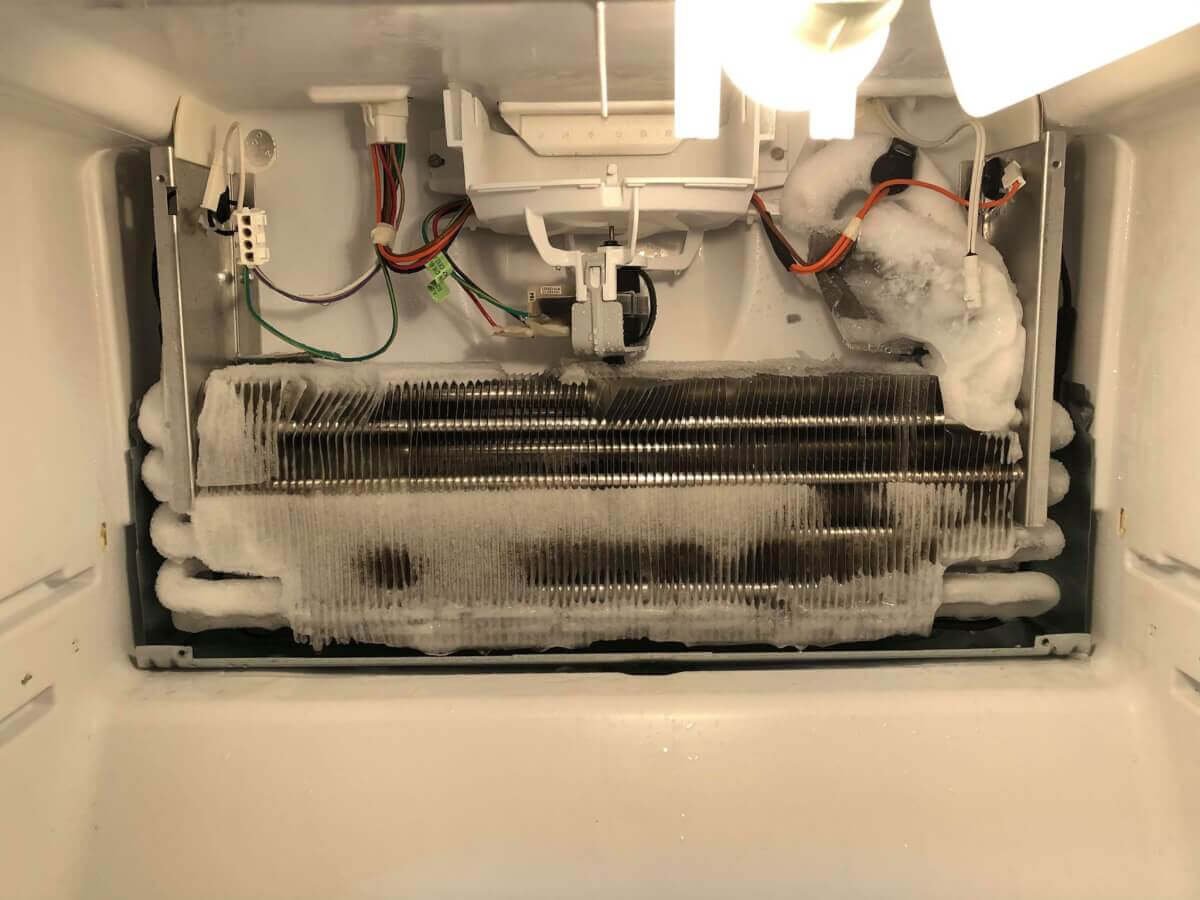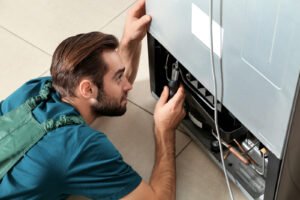If your refrigerator isn’t keeping up with its designated temperature, or your freezer isn’t heating up objected to as it should, you will need to act at the earliest time, lest you incur more than the limit on your expensive steaks that are planned for a special occasion.
1. Fridge Not Cooling
If the refrigerator coils are heating, but the fridge isn’t cooling, there’s a problem with the refrigerator fridge coils. If the coils are not cleaned on a routine basis, the evaporator coils can accumulate debris and freeze. A blocked coil can reduce the temperature of your refrigerator. If the coils are unfrozen, you will need to defrost the refrigerator again to function properly.
Evaporator coils are often found at the back of the freezer behind the controls panel. Depending on your model, you may need to gently loosen the screws or clips before attempting to remove the panel. You should check the wiring after you disconnect the coils.
To defrost them, don’t forget to remove power to the refrigerator and put some towels down across it for the thawed water that will accumulate on the ice. From there, disconnect the refrigerator from the outlet for roughly 24 hours. Then, check the defrosted coils. If they seem to be defrosted, reconnect the refrigerator to the outlet, then plug it back in.
2. Water Leaks
Implementing a leakage in your refrigerator can ruin your kitchen floor. This can be a very real danger to your home, and you should make sure that you check the fridge regularly for drips of leakage. However, these fixes are not as time-consuming or costly as you might believe, so you can make a repair yourself without needing to hire a professional.
The leading cause of fridge leaks is a blocked up defrost drain. Sometimes this varies based on the model of refrigerator you have, but the ice and water that builds up will almost always come out of the back of the freezer underneath the evaporator coils. Food things and clogging debris may prevent the defrost drain from draining, leading to a snowball effect that will result in water leaking out of the flooring.
To ensure the water is flowing, rinse the sink until it is clear of debris, and use a long, flexible tool such as a coat hanger, drain snake, or coat hanger to remove whatever might be blocking the drain. If this is not effective, you may remove the drain hose at the back of the refrigerator and connect it directly to the sink to evaluate and eliminate the source of the obstruction.
3. Water Not Coming Out of the Fridge
Who doesn’t revel in the advantage of a fridge water dispenser? The immediate access of chilled, filtered water directly into your selected drinking vessel is just one of the terrific conveniences of modern living. Hence as soon as this appliance encounters an issue, the aggravation is considerable.
Things that may cause your faucet or fountain dispenser to malfunction include a broken pipe. If you want your freezer’s temperature to be cooler, the ice in your water dispenser will likely freeze.
To repair it, be certain that your freezer is turned off and then transfer its contents to a cooler. As your freezer thaws out, deal with its content by repacking it in a cooler. Between 0 and 10 degrees Fahrenheit and cold between -17 and -12 degrees Celsius, set it at a temperature above zero.
4. No Ice
Inspite of how its ice-making capacities appear both interesting and complicated, when your refrigerator’s icemaker stops working, it is usually a reasonably easy fix. Ice-makers are very simple tools, and you may be able to repair yours yourself before looking for a service.
If your icemaker isn’t producing ice. The very first thing to check is if the ice chute obstruction is preventing a buildup. This is the most common reason why ice dispensers stop working. If you hear noise from the icemaker, but no ice is produced, the chances are high that there’s an obstruction in the ice cannon that’s stopping the refrigeration cycle from working.
Start by double-checking the insulation of the ice chute. Mop up any water that gathers in the ice chute. Then, pour warm water into the chute to thaw out any remaining water.
5. Loud Noises
If you’re unsettled by noises coming from your refrigerator, take into consideration the root of the problem. It’s not the compressor in a dark-colored refrigerator belt that makes that corals sound to turn on. On the contrary, the indisputable fact that unusual sounds are emitted by your fridge can be regarded as an indication of a more significant challenge.
In the event that you hear squealing sounds closer to your fridge’s bottom area. This may indicate an issue with your freezer fan. Continued unchecked, this could eventually damage your refrigerator. To access the interior panel of your refrigerator’s cooling fan, peel off its back. Which may require a screwdriver depending on the model of your refrigerator. Once removed, take a look at the fan. If it is not running smoothly or shows any signs of damage, you might need to replace the fan entirely.
You can hear a banging or a loud noise such as a clamoring sound that may signal an issue with the condenser fan. Over time, if the condenser fans are clogged with dust, lint, and other debris. Networking will be restricted, and the sound may intensify. If you do not know how to extricate the condenser fan, disconnect your fridge from the power source then methodically lift the thin panel on the back of the unit to prize off the external frame. Clean out the fan with a broom or a rag.



